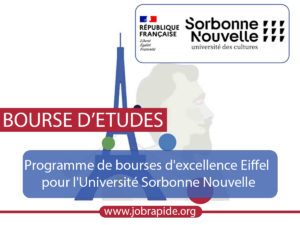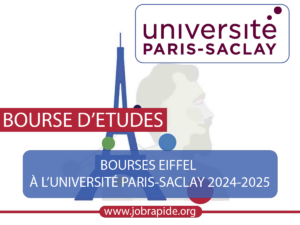Also, add a final state to symbolize the top of the system’s habits. Often used for processes, procedures, or algorithms involving actions and selections. We characterize a state with internal activities using a composite state. We use a rounded strong rectangular bar to represent a Fork notation with incoming arrow from the parent state and outgoing arrows in path of the newly created states. We use the fork notation to represent a state splitting into two or more concurrent states.
For these systems from the sphere of embedded systems, attainable (permitted) states are defined in state diagrams, as are activities which would possibly be executed in certain states or in the middle of transitions. State diagrams show the allowed states and state transitions of a state machine, in addition to the occasions that set off these transitions. In other words, a state diagram describes the allowed states of a (model) factor, the state transitions that trigger events, and the states. This complicated state diagram fashions the lifecycle of online orders by way of various statuses and transitions, helping for example the order processing system’s habits. A state which has substates (nested states) is called a composite state. A nested state machine could have at most one preliminary state and one ultimate state.
Advanced State Diagram Ideas:
They are especially important in modeling the habits of an interface, class, or collaboration. State diagrams emphasize the event-ordered habits of an object, which is especially helpful in modeling reactive methods. You can create accurate and efficient UML state machine diagrams by understanding these notations and symbols.
Developers use occasions to model how the system responds to totally different triggers and transitions between states. However, the general case of mutual dependency, however, ends in multiplicative complexity, so generally, the variety of states wanted is the product k × l × m × …. The response to an event usually is dependent upon both the type of the occasion and on the interior state of the system and might include a change of state resulting https://www.globalcloudteam.com/ in a state transition. The pattern of events, states, and state transitions amongst those states may be abstracted and represented as a finite-state machine (FSM). State diagrams are irreplaceable in phrases of describing methods and their attainable habits. One example of this is digital parts in autos, such as control models for driver help techniques.
A flowchart on the opposite hand portrays the processes or commands that on execution change the state of class or an object of the category. We use a solid arrow pointing again to the state itself to symbolize a self transition. There may be scenarios when the state of the thing does not change upon the prevalence of an event.
2 Transition
For instance, the hierarchical state machine representing the pocket calculator (Figure 3) avoids repeating the transitions Clear and Off in just about every state. Avoiding repetition permits the expansion of HSMs to remain proportionate to development in system complexity. As the modeled system grows, the opportunity for reuse additionally increases and thus doubtlessly counteracts the disproportionate increase in numbers of states and transitions typical of conventional FSMs. Though the traditional FSMs are an excellent tool for tackling smaller issues, it’s also typically recognized that they have an inclination to turn into unmanageable, even for moderately concerned systems.
- They present a number of options for eliminating the repetitions so that the complexity of a UML state machine not explodes but tends to faithfully symbolize the complexity of the reactive system it describes.
- It shouldn’t be forgotten to extinguish the inner lamp with every transition leaving the “door_open” state.
- Due to the phenomenon generally known as state and transition explosion, the complexity of a conventional FSM tends to develop a lot faster than the complexity of the system it describes.
- With Harel statecharts it’s potential to mannequin a number of cross-functional state diagrams within the statechart.
- In basic, any system that could be described by method of discrete states and state transitions could be modeled using a state diagram.
- Since this system counter is the entire state, executing the command modified the state.
Primarily used for systems, emphasizing their states and transitions. We use a stuffed circle inside a circle notation to symbolize the final state in a state machine diagram. Take a take a look at the Activity Diagram which fashions the circulate of actions for an incident. Such an Activity Diagram focuses on the flow of data what is a state diagram within a system. An motion is an executable atomic computation that results in a change within the state of the mannequin or the return of a price. If you’d choose, you should use Miro’s state machine diagram template that can help you get started.
The UML specification[1] deliberately does not stipulate any specific order; rather, UML places the burden on the designer to plan guards in such a means that the order of their analysis does not matter. Practically, because of this guard expressions shouldn’t have any unwanted effects, no much less than none that may alter evaluation of different guards having the identical set off. In the context of an online buying cart application, you have to use a state diagram to model the assorted states and transitions of the purchasing cart. A state diagram is used to characterize the situation of the system or part of the system at finite cases of time. It’s a behavioral diagram and it represents the conduct using finite state transitions.
And composite transitions characterize a more advanced path that involves multiple states. Not surprisingly, this order is analogous to the order during which class constructors are invoked. Construction of a category at all times starts at the very root of the category hierarchy and follows by way of all inheritance levels right down to the class being instantiated. The execution of exit actions, which corresponds to destructor invocation, proceeds in the actual reverse order (bottom-up).
Substates
For all however the simplest of systems, this will result in a really massive variety of nodes and transitions between nodes (state and transition explosion), which reduces the readability of the state diagram. With Harel statecharts it is potential to model multiple cross-functional state diagrams throughout the statechart. Each of those cross-functional state machines can transition internally without affecting the opposite state machines. The present state of each cross-functional state machine defines the state of the system. The Harel statechart is equal to a state diagram however improves its readability.

We use a rounded stable rectangular bar to symbolize a Join notation with incoming arrows from the becoming a member of states and outgoing arrow in course of the common goal state. We use the be part of notation when two or more states concurrently converge into one on the incidence of an event or events. This state diagram fashions the habits of a digital clock with the basic functionality of setting and displaying the time. It exhibits the assorted states that the clock could be in and the transitions that happen when the person interacts with the clock. By following these steps, you’ll be able to develop a state diagram that precisely fashions the behavior of a system and helps you higher understand the problem at hand.
State diagrams are versatile tools with functions throughout varied domains, from software growth to enterprise process management and hardware techniques. They provide a structured and visual representation of how entities or methods transition between totally different states, making them invaluable for modeling, evaluation, optimization, and troubleshooting. Whether you are a software developer, enterprise analyst, or engineer, mastering the artwork of using state diagrams can tremendously improve your ability to design, manage, and enhance advanced systems and processes.
Unified modeling language (UML) is a widely-used modeling language that helps software developers create advanced methods using visible fashions. One of the most important diagrams is the UML state machine diagram, which helps to mannequin the conduct of an object or system over time. UML state machines provide a particular mechanism for deferring occasions in states. If an event within the present state’s deferred occasion list happens, the occasion shall be saved (deferred) for future processing till a state is entered that does not list the occasion in its deferred occasion listing.
Primary Elements Of A State Diagram
A consultant instance is a do loop incrementing some counter until it overflows and becomes 0 again. Although the do loop executes the same increment command iteratively, its state area just isn’t a cycle however a line. This outcomes from the state being the program location (here cycling) mixed with the counter value, which is strictly growing (until the overflow).
A typical FSM shown in the determine under, has no means of capturing such a commonality and requires repeating the same actions and transitions in many states. What’s missing in the traditional state machines is the mechanism for factoring out the common behavior to be able to share it across many states. A state diagram is the graphical representation of a state machine and one of many 14 diagram kinds of the Unified Modeling Language (UML) for software and other methods. Statecharts show a behavioral model of states, state transitions, and actions.
As proven in Figure 5, it might be specified that the exit action from “heating” disables the heater, the entry motion to “door_open” lights up the oven lamp, and the exit motion from “door_open” extinguishes the lamp. The use of entry and exit actions is preferable to putting an motion on a transition as a outcome of it avoids repetitive coding and improves perform by eliminating a safety hazard; (heater on whereas door open). The semantics of exit actions guarantees that, whatever the transition path, the heater might be disabled when the toaster just isn’t in the “heating” state. Many software techniques are event-driven, which implies that they repeatedly anticipate the occurrence of some external or inside occasion similar to a mouse click, a button press, a time tick, or an arrival of a data packet.
























